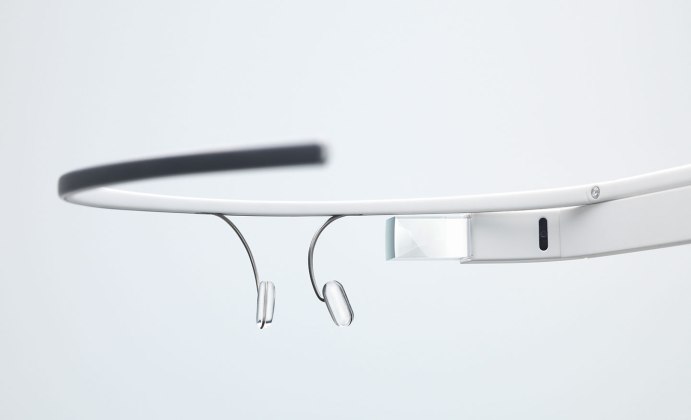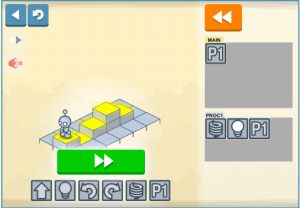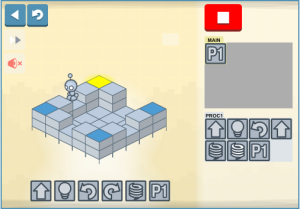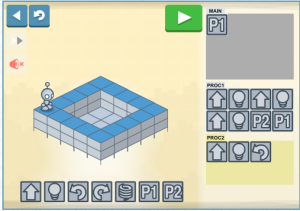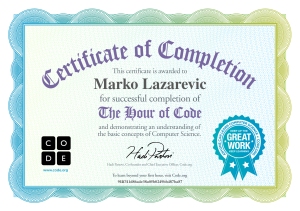How did you decide on the topic of your ILE?
I chose robotics as the subject of my ILE mainly because it was my biggest, and most important, extracurricular activity. At the time of planning the ILE and around the time of presentation, it was the most active, with pre-season happening around the planning period of the ILE and the presentation of the ILE occurring at the halfway point of the build season, when we actually start constructing our robot. Since I had been doing robotics for four years, I’ve become fairly knowledgeable in it and what constitutes the process of building a functional robot in six weeks. Finally, every year that I’ve taken part in robotics, I’ve always learned something new and useful that I can use outside of the club, so I anticipated that this year would bring something new to the table as well.
What were the goals that you established for yourself?
- Win (or at least do well at) the competition
- Have a great year as a team
My goals, which were the same as Ronak’s, as we started out planning our ILEs together, were more team-oriented rather than goals that I set for myself during the duration of the ILE. However, while working together toward the superordinate goal, I still gained valuable knowledge from experience and advice that I gained from mentors, and team members as well.
Did you achieve the goals that you established for yourself? Why or why not?
Technically, we did not achieve the goals that we established, considering we are only a little over halfway through the build season. Our goals will be achieved by the end of the build season, somewhere around mid- to late-February. However, we are doing very well at this point in time, compared to previous years. Our chassis is driveable and the programming team is working on finishing up all the code required for all the robot’s commands in order to increase the likelihood of the drivers being able to practice with the finished robot before we pack it up and send it to competition. Also, this year we are using CAD in conjunction with the mechanical team effectively. This allows us to design potential robot parts and prototypes on the computer using PTC’s Creo software, see if the measurements and mechanics are feasible when building an actual robot, and then building a robot based on the 3D model. To add on to our 3D revolution, one of the mechanical team members has also successfully created his own 3D printer at his home. This means that, using free 3D design software such as Google SketchUp, he is able to create custom parts for our robot, print them out at his house using the 3D printer, and utilize them on the robot without the need to improvise due to lack of custom parts.
What was your motivation level during your ILE? What were the factors that kept you motivated?
Considering I’m the president of the club, my motivation level during this project HAD to be at its peak. As president, I had to serve as a role model and guide for other members of the club, so if at any point I was not actively engaged in the club, it would show the other members that they were not required to be actively engaged either. Also, with senior year being my last year of the robotics club, I had to ensure that this year was the best of the four that I had in high school, both in terms of academics and extracurriculars, so I was always (and still am) pumped up about going to robotics and making significant progress each time we meet. As a bonus, if we do well this year, then next year the club would be able to advertise their success and gather more sponsors, which would in turn allow for better materials and more quality robots, and perhaps even more complex strategies. Overall, however, the biggest two motivators for my ILE and for the robotics club was the presence of my friends in the club, as well as the simple love that I had for the club due to the amount of time and effort that I invested into it. Motivation was definitely not an issue for me during the ILE process.
What challenges did you face as you worked towards accomplishing the goals of your ILE?
The biggest challenge, as was usual with previous years, was deciding on a design for the robot. Usually we have team members come up with design ideas for a potential robot and present them to the team, and then we all vote on what idea we think is best. However, we usually run into issues at that point, because each team that presented an idea believes that theirs is the best and, in most cases, refuses to acknowledge the benefits of using parts and ideas from other teams that presented their designs. This year, we eliminated that problem by having each team that presented an idea rate their design based on 10-12 criteria that we all saw as most important for a robot to have. Using this method, we eliminated certain designs with overall low ratings right off the bat and eased the voting process for ourselves.
The other issue that we encountered which was, as usual, present in past years, was the issue of communication. Although communication between mechanical, programming, electrical, and logistics has improved greatly this year, there are still areas which we could fix to make perfect rather than acceptable. The programming team, for example, had encountered an error with the electronics part of the robot and could not get it to drive. Instead of asking electrical what they did and seeking their advice in finding out the source of the problem, the programmers were vehement about trying to figure out the problem on their own, despite our urging them to ask the electrical team. Although they did eventually find what was causing the issue, the conflict could have been resolved using a much faster, and more convenient, method.
What successes did you experience throughout your ILE?
As I stated before, this year was much more organized in terms of choosing a robot design and listing criteria that were regarded as the most important aspects of a successful robot. We also got a $10,000 sponsorship from NRG, a company that one of our mentors works for, for this year and next year, meaning we should (hopefully) not run into any financial pits anytime soon. We also set up a marketing subteam that will do (and has been doing) a significantly better job of keeping our sponsors in touch with what we’re doing and thanking them for the huge help that they have given us. Finally, we finished all the field elements and have put retro-reflective tape on them so that once our robot is completed, we can jump right into driving practice and prepare as best we can for the competitions.
What skills and knowledge did you develop as a result of your ILE?
- Leadership skills
As president, it was my duty to make sure that each person in the club was assigned to either a team or a task, so I learned much in terms of strategies and tactics for getting people to work, even when they might not want to. - Problem-solving skills
Honed mainly during design decision and the time limits associated with gathering sponsors for food on Saturdays, the longer build days - Planning skills
Planned what restaurants would provide us with food on which dates, planned who was going to pick food up and when, planning who would go pick up the kit of parts on the day of kickoff, etc
Will the skills and knowledge you developed through your ILE help you in your future?
Most definitely. Communication is a crucial component in the real world, whether during a job search or in the office. Problem-solving is essential when working in groups and deciding on what components will constitute a potential final project, the pros and cons of each decision, and in general how a final product is going to be constructed. Leadership skills, the most important of all the ones that I trained during my ILE, are most valuable to me because leaders are always sought after in the real world. Leaders are able to motivate workers, in turn facilitating the progress of a product and the likelihood of its success. My position as president of the club will surely be beneficial to me in the future.
If you could start over, would you have changed the topic of your ILE? Why or why not? Are you proud of the outcome/results of your ILE? Why or why not?
I would not change my topic of my ILE if I could start over due to how important and personal the robotics club is to me. I am incredibly proud of robotics and the immense time and effort I have put into the club. I am more than jovial that all my work has allowed me to finally become president of the club during my final year in the club. I’m also proud of the results that we produce each year. At the end of each build season, looking upon a finished robot unifies us with a club because we can proudly show off our creation in only six short weeks. Finally, the thing that really convinced me that robotics was the right topic for my ILE was Mr. Musselman, the new member of the Science Center, saying that “[he] knew college kids did this kind of stuff, but never thought high schoolers were engaged in it, too”.
What advice, strategies, and suggestions would you provide to future Help Desk students to help them with the ILE?
Four words: pick something you love.
